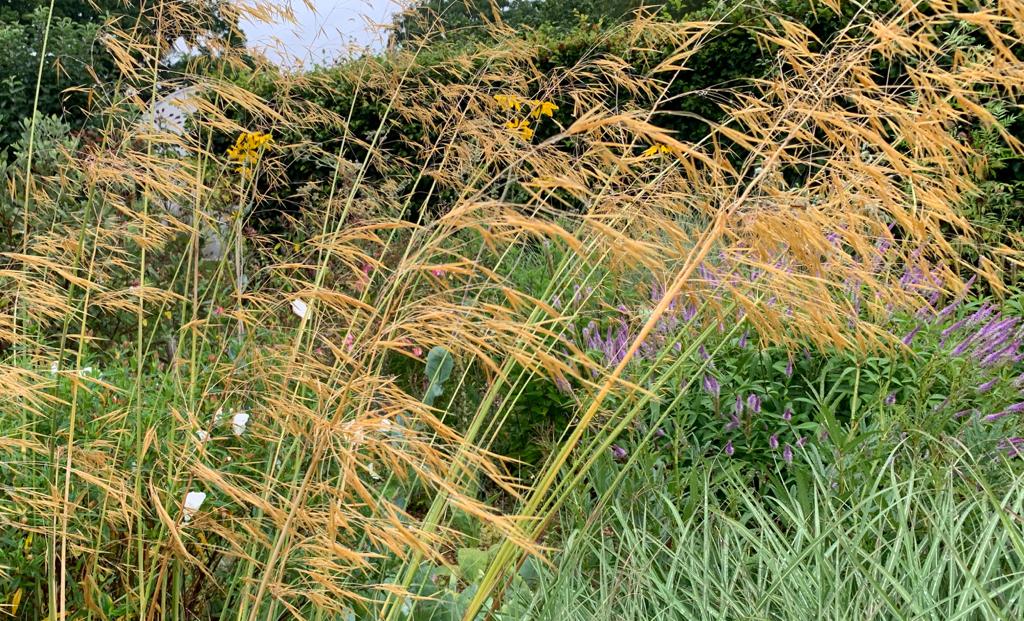
Unfortunately my sisters view windy sites in a garden as a problem rather than an opportunity – if only they had studied proper subjects at school such as geography and biology, (instead of in Elaine’s case, Classics, and in Caroline’s, boys) they would know that in other regions of the world there are plants that will not just ‘cope’ with wind but will revel in it.
In recent years us enlightened gardeners have turned to the North American prairies and the Russian steppes for inspiration. Here, there are plants with adaptations to searing heat in summer, bitter cold in winter and strong winds all year round stamped into their DNA. So with the right choices your windy site can be a cause for celebration, not commiseration.
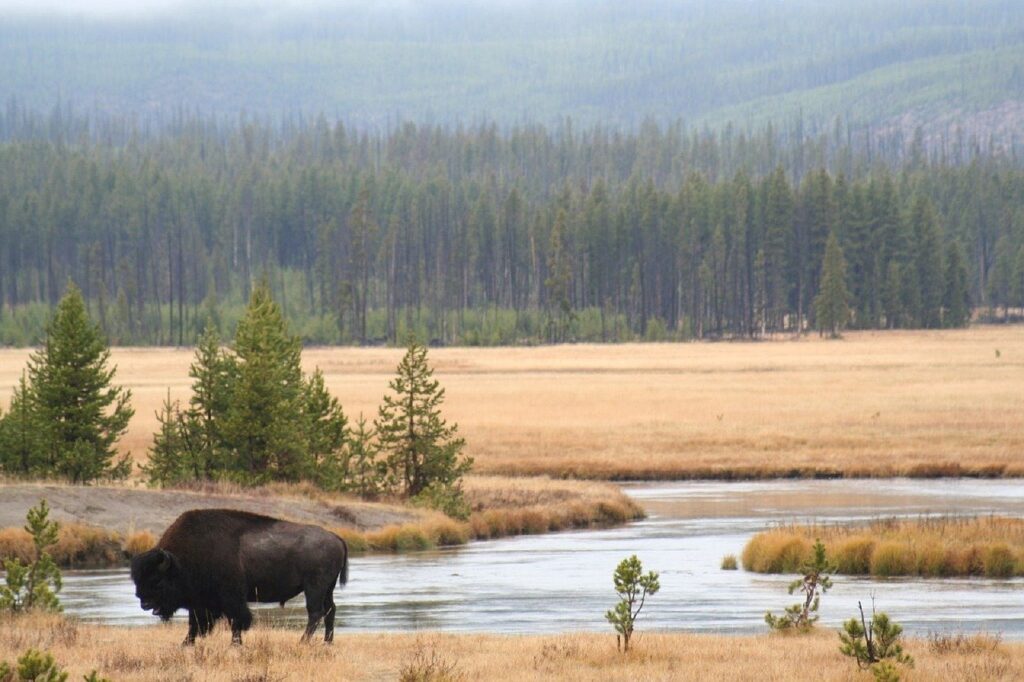
The mainstay of these windswept eco-regions are grasses. The beautiful golden oat grass, Stipa gigantea in our feature picture today actually comes from the Mediterranean and although it looks pretty, dancing around in a light breeze, you need to look more to its North American cousins to withstand a howling gale.
A good choice would be a switch grass, Panicum virgatum; choose from; P. ‘North Wind’, ‘Prairie Sky’ or my personal favourite ‘Hanse Herm’. Healthy, upright growth in early summer gives way to pretty, beaded seed heads and gorgeous russet colours in early autumn which seem to positively enjoy enjoy being buffeted around all winter.
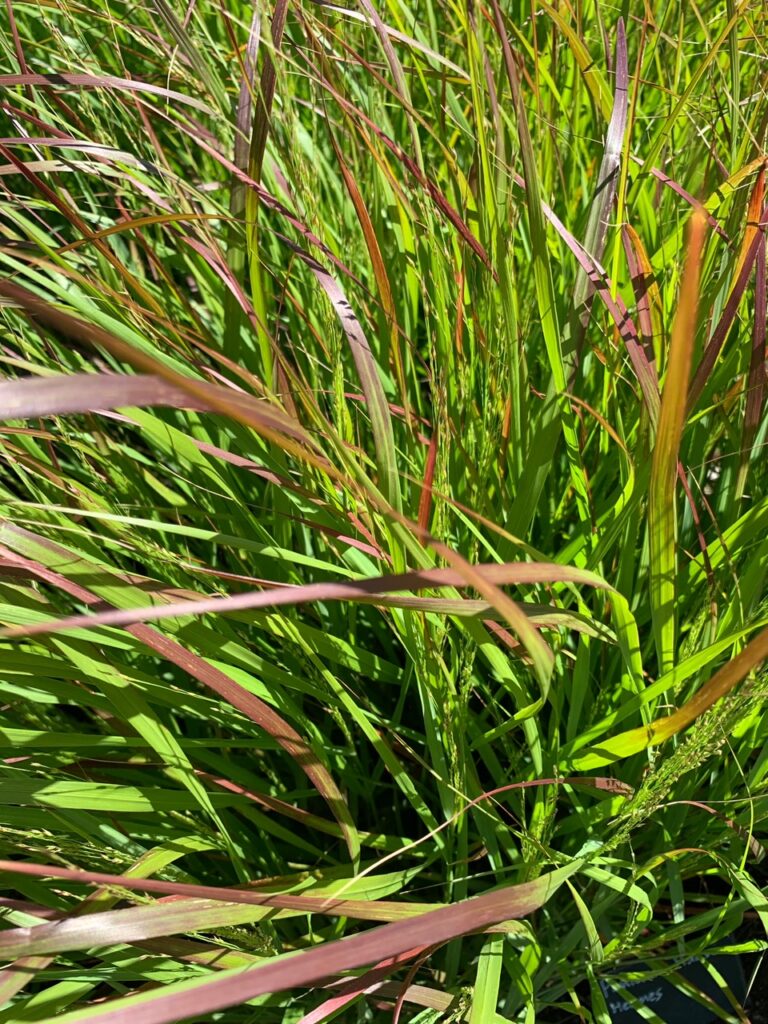
Mix this with other North American species such as Veronicastrum virginicum (culvers root). The best known cultivar is the purple V. ‘Fascination’ but in my experience this selection grows a bit too tall and top heavy for a properly windy site, where the shorter but supremely elegant V. ‘Album’ might be a better choice.
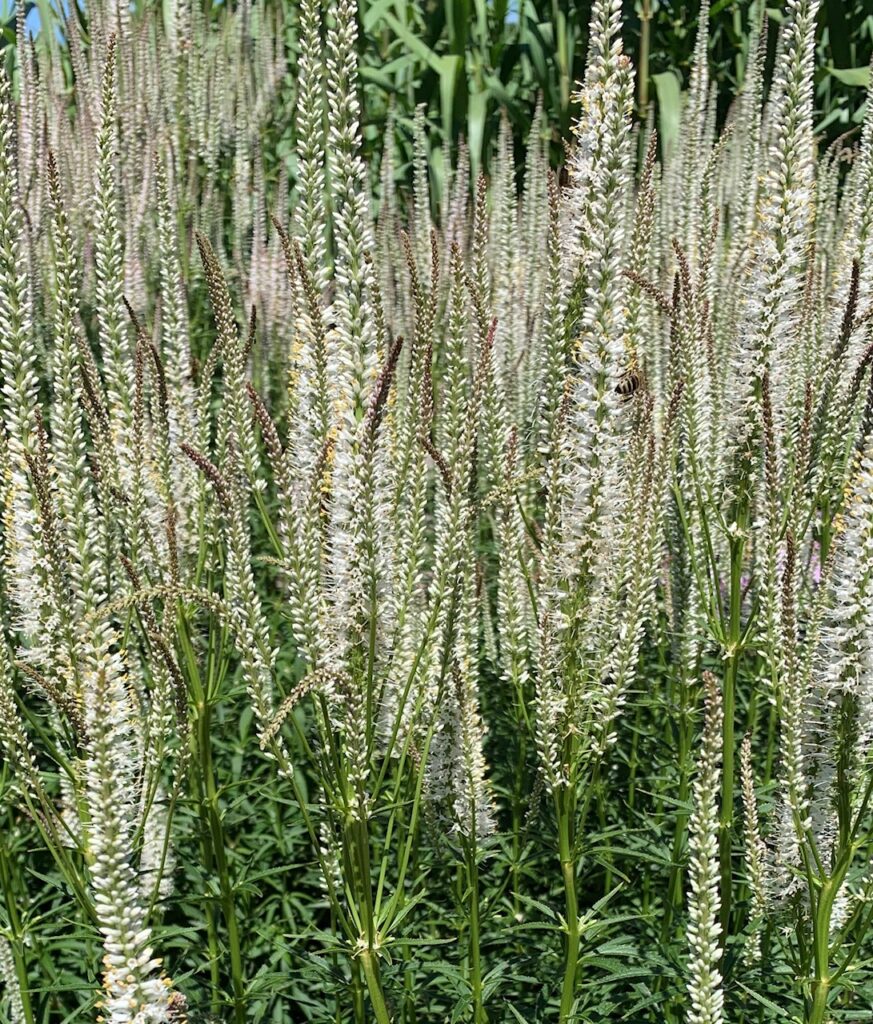
I can feel E and C wincing at this point, expecting a list of single season late-flowering summer prairie perennials which have been in vogue for a while, but no, I have been studying the work of Professor Nigel Dunnett, of Sheffield University. Professor Dunnett was behind the ecological meadows at the Olympic Park, and establishing ‘The Sheffield School’ of plant design in which ecology meets horticulture. His planting schemes have a series of plant eruptions in each season of the year as they would in a natural ecosystem.
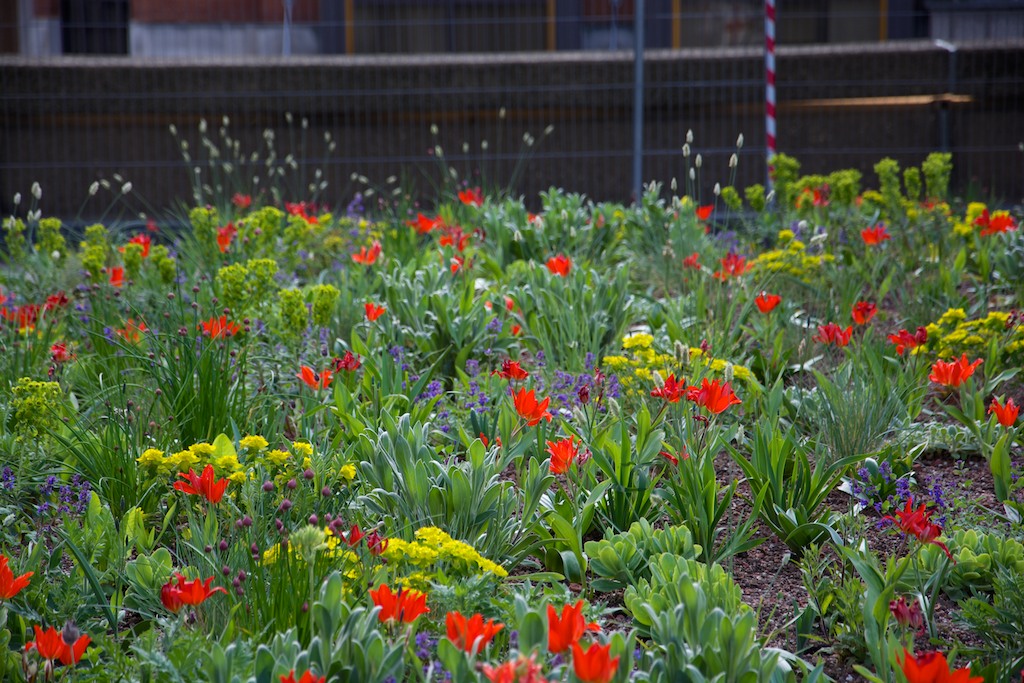
You may be surprised to hear that one such recommendation for spring planting in a windy site is Pulsatilla, better known as the pasqueflower for its Easter flowering period, but also known as the prairie crocus or windflower, which, despite its tender appearance actually prefers exposed locations.
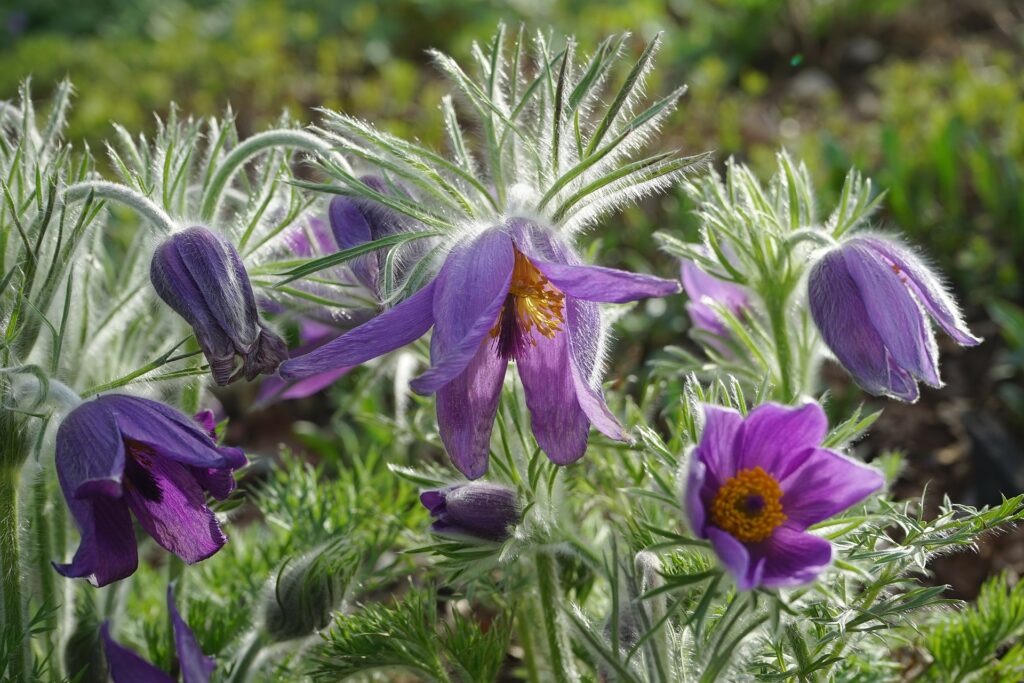
You could pair these with some of the jewel like botanical tulips found in the exposed mountains of the Balkans and if you are wondering where you would get hold of such rarified bulbs then look no further than the wonderful Kevock Garden Plants nursery in Scotland. They grow a treasure trove of horticultural gems from across the globe and distribute by mail order, and have just released their spring catalogue. Again there is a link at the end.

No, no, my sister has as usual been led far too far up her scientific cul-de-sac on this one. Why would we want a garden that resembled the Russian steppes when what is actually required are some tried-and-tested shrubs that have wide bases, and will stand firm while they filter the wind, giving you an area on the lee-side. where you can grow some frothier items.
A friend recently asked what taller plants he could grow on the sunny-but-windy balcony of his newly-bought flat, and I think Viburnum tinus, Mahonia, and Sambucus (elder) would all fit the bill. The dark-leaved elders (e.g. ‘Black Lace’, ‘Black Beauty’) are pretty stalwart in a gale, and have the bonus of lovely flowers as well as the dramatic foliage.
I have Euonymus ‘Emerald ‘n Gold’ and it never looks tatty or forlorn in cold windy weather – in fact it has the appearance of being in the sun all the year round which is very cheering!
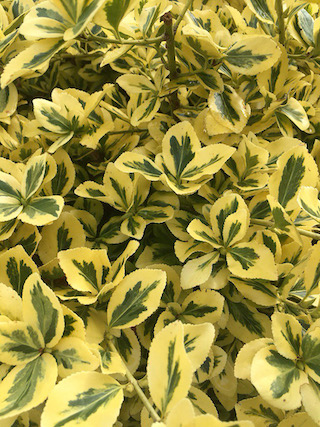
I am a huge fan of Rosa rugosa for a windy situation – its rough leaves and spiny stems don’t seem to suffer the usual ailments that roses can be heir to (e.g. black spot). They will give you flowers, huge decorative hips and pretty autumn colour, and they certainly seem immune to the fierce Westerlies we sometimes get here.
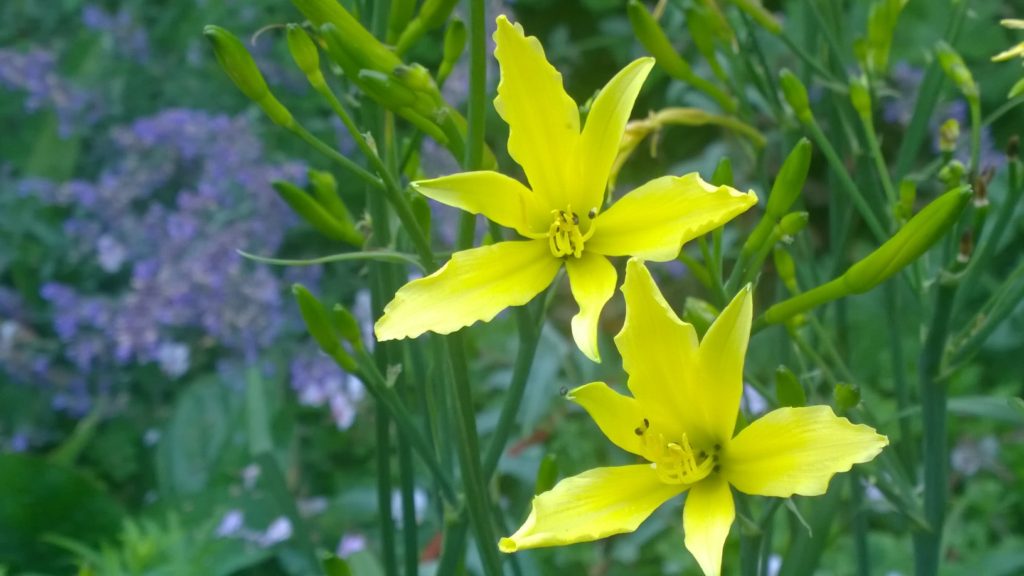
Shrubs such as these – and perhaps hollies, dogwoods and even Philadelphus could be added to the list as well – will allow you to put in some perennials that don’t mind a breezy place; I’m thinking now of Alchemilla, Hemerocallis (daylilies), Nepeta (catmint), Calendula (marigolds), Japanese anemones………………….Yeah, yeah, I know they are not ‘special’, but I reckon special is as special does, no need to make a drama out of a crisis…. these will do the job for you.

Stand aside please. Patronising amateurs, move over. Here in Scotland is where the fun stops and the fight starts. How can my stay-at-home sisters in the south even contemplate the challenges faced by those of you gardening in Orkney, Shetland and the Hebrides?
The Firth of Forth is no picnic I can tell you…..and tell you again – sometimes extremely loudly with colourful prefixes.
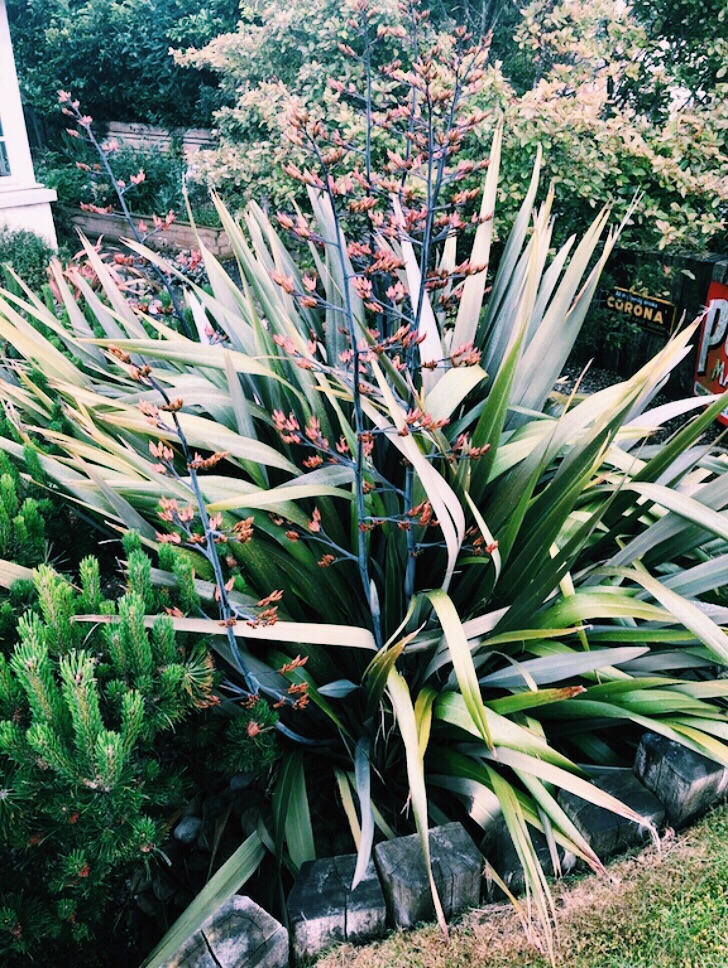
Here you need best-in-class wind survivors – I’m talking bushy shrubby things like Salix lanata – straight from Siberia; Olearia macrodonta – gnarly New Zealand veterans and their strappy kiwi stablemates phormiums which truly couldn’t give a damn even supposing a typhoon passed through.
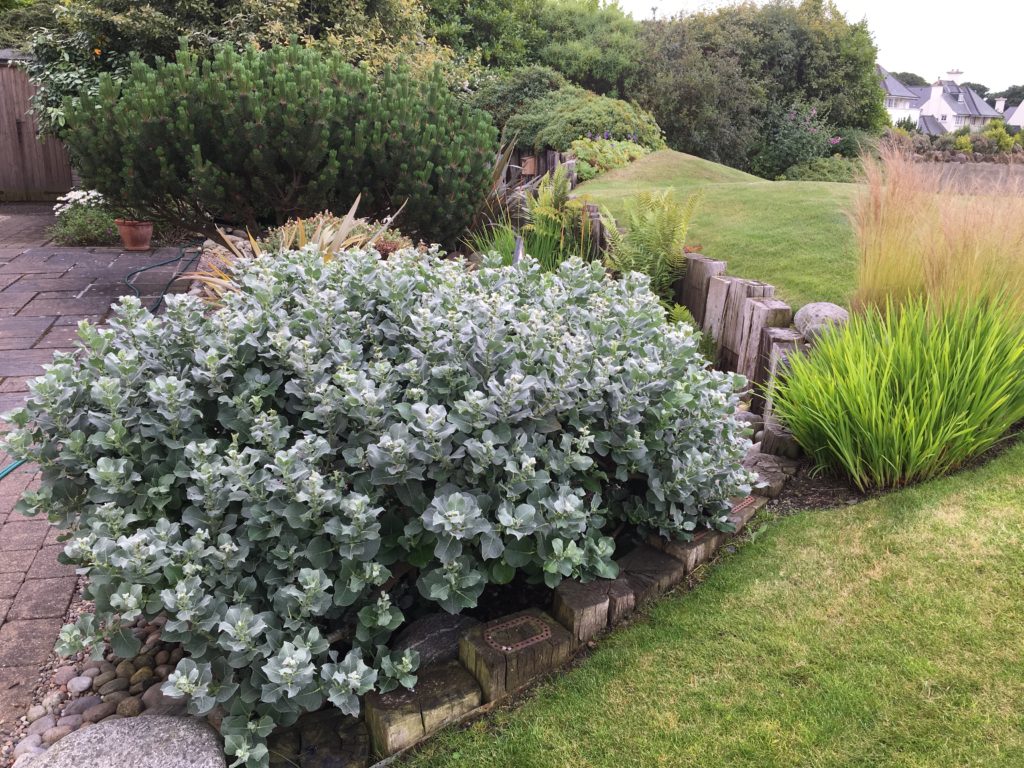
Generally truly windy locations are either on the coast or up a mountain so you have either salt or freezing cold to add to your woes. Wrestling the former I stick to low short-coupled options like Armeria (sea thrift) Sisyrinchium californium (plucky but slightly boring) and Celmisia another kiwi with ambitious 18 inch stems but which wisely only risks flowering for about seven days.
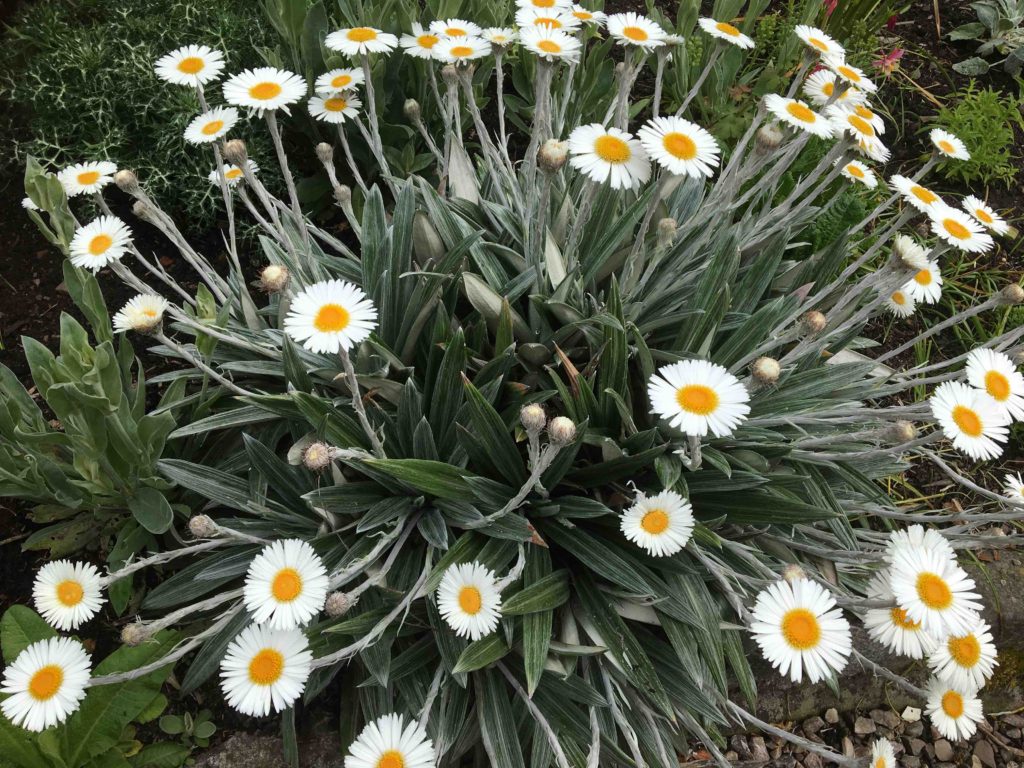
If it’s colour you crave despite the conditions, my admittedly cautious exploration suggests that Iris sibirica (the clue’s in the name) can liven things up in June, crocosmia and agapanthus in late summer and Diascia personnata for months and months – being that jolly sort of girl at school who just never complains.
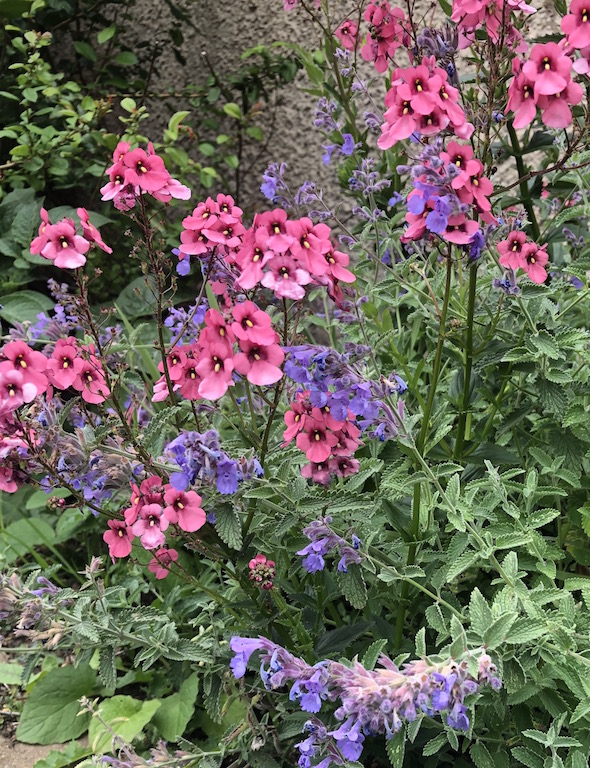
There will be more so let’s hear some suggestions from you hard core gardeners and educate my sisters on proper windy gardening!
Louise is also going to educate us all this week with her great plant this month which masquerades as a salvia but is actually something much more impressive. Click on the box below.
NB If you think Laura’s got the right approach to windy sites have a closer look at Nigel Dunnett’s project at the Barbican
NNB Then take a look at Kevock Garden Plants exciting bulb list.
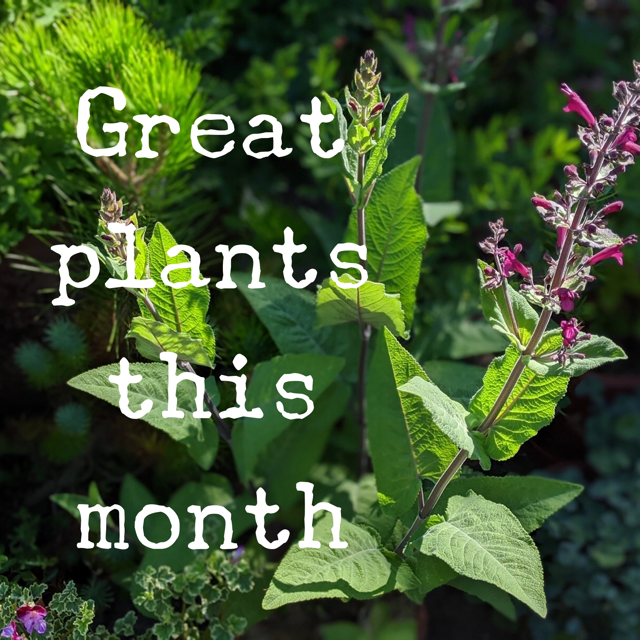
NB If you’d like a bit more gardening chit-chat from the3growbags, just enter your email address here and we’ll send you a new post every Saturday…
